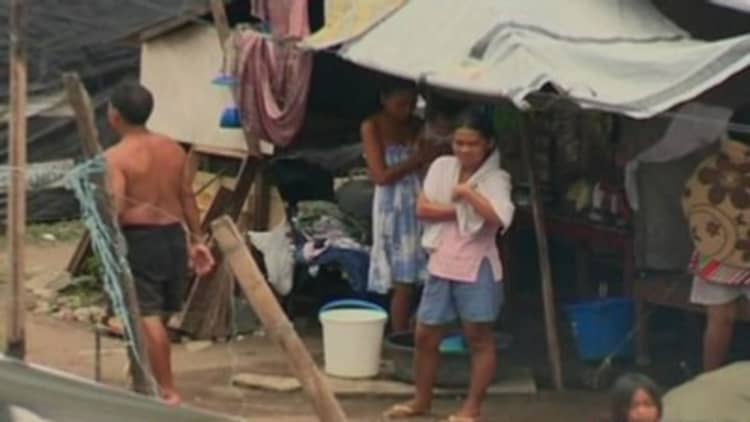
Tacloban mayor Alfred Romualdez is a man with a mission: six months after Typhoon Haiyan devastated the city, he's still trying to find permanent homes for 14,000 families displaced by the worst storm in the country's history.
The central government recently allocated over $5 million to Tacloban but the funds have mostly been penciled in for rebuilding the city's public buildings and infrastructure.
However, for Mayor Romualdez housing is Tacloban's most pressing problem. He's trying to obtain funding for a master plan to build new townships, and get residents to higher and safer ground.
Read MoreWill Philippine remittancesbe a thing of the past?
"Shelters are a priority now, especially in the danger zones," he said, referring to houses that Haiyan survivors rebuilt near the shores.
Most of the huts are not supposed to be there, as they are well within the 40-meter no-build-zone near the shoreline. But when asked why they are rebuilding where the next typhoon or tsunami could easily hit first, most residents said 'where else could we go?'
"Many of them are still there because we don't have enough temporary shelters; many of them are still in tents and makeshift houses," said Romualdez.
There is a sense of urgency, because the start of the rainy season is just two months away.
Read MorePhilippines - next to join the TPP?
Romualdez did not deny that political rivalry between the central and local government is part of the reason for the slow rehabilitation in Tacloban. Romualdez comes from the Marcos clan, often seen as political rivals of the Aquino family.
"There is growing sentiment of the people that there is politics, unfortunately, because of the response from the central government. But the people here are resilient, they see that they have to paddle their own canoe and move forward," he said.
Managing waste
Housing woes aside, there has been some progress in the city: about 90 percent of the debris has been cleared, while nearly 40 percent of the small businesses in downturn area have reopened, Romualdez said.
Read MoreIs the Philippines headed for a boom or a bust?
But with the clearing of debris almost completed, Tacloban now faces waste management problems.
In the northern part of Tacloban municipality, at Barangay Santo Nino one can find an area the size of four football fields, holding 500,000 cubic meters of waste. The United National Development Programme (UNDP) is working to turn the area into a controlled dumpsite.
That means covering the waste with soil, in order to segregate the hazardous material, reduce risk of poisonous water, and minimize the environmental impact of the surrounding areas, said Sören Säf, UNDP debris and waste manager.

Proper waste disposal is a crucial part of the recovery, not just for allowing the reconstruction of destroyed areas to proceed, but also in helping reduce the risk of disease.
Health risks
For Dr Julie Hall, World Health Organization (WHO) country representative, the risk of disease is only one of the problems that Tacloban's health facilities have to grapple with.
"We are seeing a baby boom after the typhoon, we are anticipating in the next few months an increasing number of babies born and many of them will be to younger mothers," she said. "We often see this happening post disasters, as societal structures change and access to contraceptives become a bit more difficult."
Read MoreFive reasons to be positive on the Philippines
WHO estimates there will be 70,000 births in Philippine typhoon-hit communities, including Tacloban, over the next three months.
According to Dr Hall, there is also a need to train health professionals in psychological first aid, to cope those that have mental health issues. Such cases often start to appear six to nine months after a disaster, as people come to terms with the enormity of their loss.
With typhoon season just a few months away, the city is running out of time. It needs to get back on its feet quickly, and be ready in case disaster strikes again.

